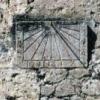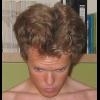Warning: This is going to be a lot of speculation and conjecture.
There has been a low proportion of people around these boards who take resveratrol and subsequently comment about joint pain. Since the number of people has been small compared to the number who take resveratrol, and since we can factor out 50% mixtures of resveratrol as other grape OPCs can cause adverse effects at high doses, the issue has remained an odd curiosity. Add to the confusion the demonstrated in vivo effects of resveratrol to protect joints from damage, either in inflammatory arthritis or osteoarthritis models. In vitro studies have directly shown resveratrol's anti-inflammatory (inhibits NF-kB) and condrocyte protective abilities. It should be expected then, from all evidence, that resveratrol would fight arthritis, inflammation, and protect joints quite potently.
However, there are three potential ways resveratrol could lead, in some people at high enough doses and in response to certain conditions, to joint pain. This doesn't mean joint damage per ce, but pain.
The first two ideas come directly from Maxwatt, so all credit goes to him.
1. Suppression of angiogenesis.
Resveratrol is known to reduce angiogenesis. This is great for fighting tumors and cancer, but can slow tissue repair on the other hand. Areas of repeated stress may be in need of more repair than otherwise, such as the joints and surrounding tissue. As damage accrues, the nerves signal that there's unrepaired tissue, and pain my result (similar to how ripped muscles ache after intense exercise?).
On the other hand, angiogenesis is actually one of the pathological effectors of inflammatory arthritis. Indeed, blocking angiogenesis has been shown to alleviate arthritis in in vivo studies. The same is true for osteoarthritis, where angiogenesis is one of the factors that lead to this condition and joint pain.
If anything, this suggests that resveratrol's anti-angiogenesis properties is yet another way it protects joints from pain, inflammation (tendinitis included), and degradation. In the absence of direct tissue damage, such as a cut, angiogenesis within the body seems to lead to more trouble than good, and is generally avoided. More evidence is needed to correlate a lack of angiogenesis in healthy joints with pain, and so far we see the reverse with arthritis. This does not absolutely rule out a lack of basal angiogenesis as being responsible for minor joint pain in otherwise healthy, heavily used joints. In fact, a ripped tendon might need angiogenesis to heal, and a lack there of may rapidly cause inflammation and pain. Still, it seems less likely a cause than the following two possibilities, in my opinion.
Solving this issue would simply require taking breaks from resveratrol dosage, such as two days out of a week or every other week, or taking a pro-angiogenesis supplement at the end of the day if resveratrol is taken at the beginning. However, I advice against the latter, as again, too much angiogenesis is directly associated with joint inflammation and arthritis.
2. Insufficient niacinamide levels.
This is a very interesting idea of Maxwatt's I hadn't even begun to consider. If resveratrol is activating Nampt as its main mode of action, then the conversion of niacinamide to NAD+ could lead to a deficiency in niacinamide if the levels were already too low in a person's body to sustain the burst of Nampt protein expression and activity. In fact, this idea is supported by the observation that increasing niacinamide in the diet of human participants lowered osteoarthritis impact and joint damage. Pain levels did not go down, the study reported, but the individuals on niacinamide were able to reduce their anti-inflammation medications by 13%, which is a metric for reduced pain, just not all the way on its own. While this does not prove that loss of niacinamide will increase joint pain, it does suggest it. Another study also showed the ability of niacin to similarly reduce arthritis damage in rats.
We can hypothesize that systemic stimulation of Nampt by resveratrol could lead to a sudden, acute drop in niacinamide levels. If there is not enough niacinamide in the blood stream to make up the difference and feed the machine that has been started, transient deficiency might result. Of course, this will be reversed once Nampt returns to basal levels and NAD+ using systems kick in, or if more niacinamide is ingested. In short, resveratrol may simply make known in the joints a pre-existing deficiency in niacinamide levels. Again, this is only a hypothesis and remains to be tested, even anecdotally.
Solving this issue would simply require niacinamide supplements 3 hours after resveratrol, or taking a break from resveratrol similarly to the solution for problem 1.
3. Increases in extracellular Nampt levels lead to joint inflammation.
Out of all the possibilities, this one is quite interesting to me. This possibility will only be true, I think, if resveratrol's main target is Nampt, not Sirt1, and only Sirt1 by extension of Nampt function.
Nampt (PBEF) is a very curious enzyme. Not only does it reside intracellularly, but it is secreted through an unknown mechanism (it lacks a secretion tag!) and acts extracellularly as a signaling hormone, pro-inflammatory cytokine, and innate immune system modulator. Extracellular Nampt can effect macrophages and other immune system modulators completely independently of its niacinamide to NMN catalytic role. Additionally, extracellular Nampt has been shown to increase inflammation and damage in arthritis. Consequently, inhibition of Nampt leads to reduced severity of arthritis.
What this suggests, is that we know resveratrol increases Nampt expression by up to 3 fold intracellularly, and that this leads to Sirt1 and AMPK activation, and NF-kB inhibition - acting as an anti-inflammatory. However, if some signal was received, how that is regulated I do not know, to cause release of the resveratrol increased Nampt from the cell, one would expect pro-inflammation to result from eNampt signaling. It may be, for some people especially in the joints, that Nampt is being released from the cells instead of being retained, and causing inflammation and tendinitis.
Again, how this would happen, I do not know. Obviously, this is not the norm. The levels of resveratrol that are taken may directly correlate to the level of Nampt overexpression. As overexpression goes up, for some people, the probability of Nampt secretion may also go up. Therefore, a solution to the problem may simply be to reduce resveratrol intake to levels that do not cause joint pain or inflammation.
Alternatively, the same solution of not taking resveratrol for two days out of a week, or every other week, may also work.
Which of these is most likely? I do not know. The first possibility seems least likely of all, to me, while the third and second seem to both have a good chance depending on the biochemical background of the person involved. Without further research, it is impossible to say which of the remaining two are more likely: we have to see if a large enough niacinamide drop occurs from Nampt activation and if this causes transient pain or inflammation in joints, and we need to know what signals cause Nampt secretion and what factors may prevent that. In short, for some people it may be reason 2, and for others reason 3 (or reason 1, can't rule that out still). At least if it's reason 2, one just needs niacinamide and that should fix it - I await any anecdotal reports. Also, there could always be more pathways we do not know of or have not considered that are causing these joint problems for some.
None the less, all studies with resveratrol have shown it to protect joints rather potently. Even if increased pain or inflammation is occurring, the joints are likely still in good shape, and modulating resveratrol and/or niacinamide should be all that is needed to reverse the condition.
Edited by geddarkstorm, 31 January 2009 - 05:16 AM.













































